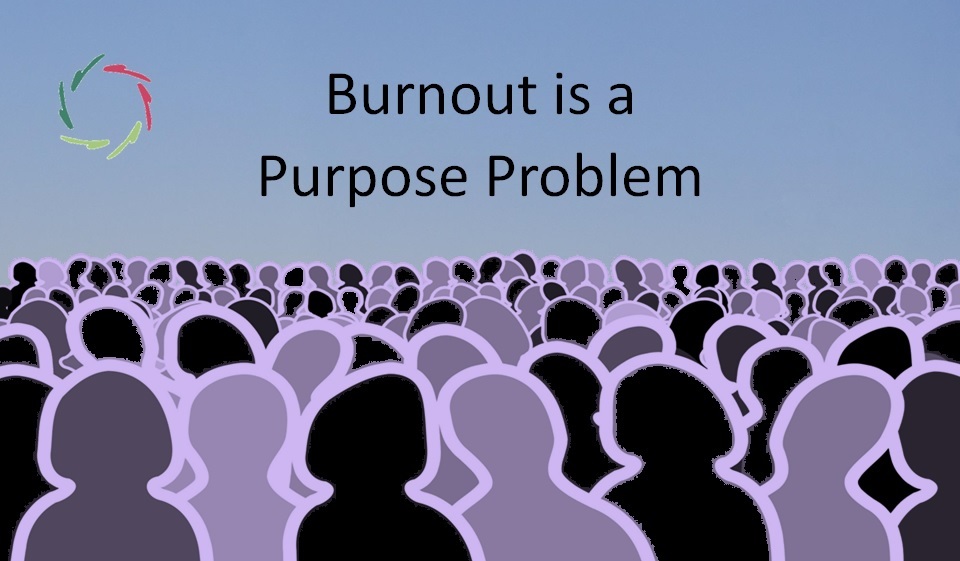Giver Burnout ― and How to Prevent it

Giver burnout is about giving without inner alignment.
This blog explores how philanthropic generosity can become a path of growth instead of depletion.
What this blog is and is not about
When we hear ‘giver burnout,’ we often think of caregivers – nurses, parents, helpers – overwhelmed by responsibility. That’s important, but it’s not our focus here.
This blog is about another kind of giver: the philanthropist, the donator, the soul moved to support others materially or emotionally. Even in this realm, a feeling of burnout can arise, silently and steadily, when generosity drifts from its authentic source.
To give, you need to receive
There’s a strange irony in philanthropy: the giver gives and is praised, but inside, he may be hollowing out and increasingly less inclined to give.
True giving should be part of a natural cycle. No tree bears fruit year-round without rest. As explored in Philanthropy from the Inside Out, real generosity becomes possible when it’s rooted in personal nourishment. But a giver who forgets to receive – support, perspective, meaning – is eventually left dry. So, when the giving doesn’t nourish, it’s at risk of declining as we witness worldwide.
True charity is (also) a gift to yourself
Giver burnout happens when the giving leaves the giver diminished.
But as described in Compassion and Philanthropy, authentic philanthropy is mutually enriching. The donor grows in depth. The act of giving becomes a reflection of being — inviting not depletion, but deepening. When giving aligns with one’s deeper self, it becomes more than a transaction. It becomes personal growth.
The roots of giver burnout
It doesn’t start with generosity. It starts when giving loses its meaning. This is rarely conscious. But it’s precisely this non-conscious drive that turns warmth into weariness.
This can happen when the motivation shifts from care to guilt, or from inspiration to identity. Givers may act from a subtle sense of obligation, a desire to ‘earn’ goodness, or maintain an image.
Silent martyrdom and ego traps
Some givers carry a secret belief: “If I keep giving, maybe I’ll finally be enough.” This quiet martyrdom might look generous on the outside, but it slowly corrodes the soul. Even status or the warm-glow of giving can trap the ego in loops of approval-seeking.
Yet as Compassion and Philanthropy suggests, these motivations need not be denied, only seen clearly. When lightly held, they may even help. But when clutched tightly, they begin to own the giver.
When Compassion becomes contaminated
Not all giving is Compassionate. There’s giving for control, for appearances, or as a mask for influence or pressure. True Compassion – like that described in Asking for a Donation – is non-coercive. It never demands. It respects growth on the other’s terms. And crucially, it respects the giver’s own humanity.
As discussed in Lisa’s Concrete Coaching in Philanthropy, giving has become more transactional. Numbers. Outputs. Reports. What’s missing is connection. What givers actually long for is something more: Radical Connection. A sense that the gift matters — not only to others, but to themselves. Giver burnout arises quicker when giving is measured instead of felt.
Guilt-free giving: the dangers of pressure
Fundraising built on guilt can burn out the giver. When giving is prompted by manipulation, even subtle, the warmth drains away. A powerful insight from Asking for a Donation: guilt diminishes responsibility. Instead of empowering the giver, it diminishes agency.
A fundraiser who respects the giver invites clarity, not shame. When fundraisers guide donors toward deeper alignment, everyone benefits. This requires listening, patience, and depth.
Lisa in development: a companion app against burnout
[See Lisa’s Concrete Coaching in Philanthropy]
Lisa may offer support — not as a replacement for human connection, but as a mirror for it. She can help donors explore their true motivations, reflect on impact, and clarify their philanthropic path. From A Compassionate A.I. Perspective on Fundraising, we learn that this support can build lasting trust.
Through reflective questions and value-based coaching, Lisa helps givers stay grounded. She doesn’t push for more giving. She invites alignment. “What does this gift mean to you?” “How do you want to grow through this act?” These questions gently return the giver to himself. When that happens, giver burnout has no soil to grow in. Generosity, instead, becomes sustainable.
When donors burn out, so do fundraisers. When philanthropy becomes hollow, receivers feel it too. This is why Lisa’s role includes all parties. Coaching intermediaries, empowering beneficiaries, and nurturing a feedback loop of growth ensures a self-sustaining system rooted in shared dignity.
The generosity crisis is a depth crisis
The decline in giving is existential, not just economic. People feel disconnected, unseen, unmoved. That’s not fixed by urgency. It’s healed by depth.
Lisa’s presence is precisely to restore that depth. In every act of giving, she points to meaning. Not to effort, but to alignment. Not to guilt, but to growth.
Let the giver be a total person
Philanthropy isn’t a performance. It’s a human act. And humans are complex, layered, longing for connection. When the total person is honored – inner needs, outer actions, and everything in between – giving can again become a joyful part of life.
Let giving not be a burden, but a blooming.


